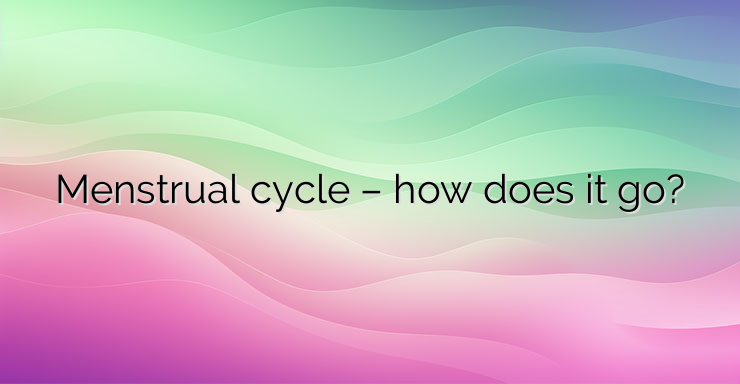Periodic bleeding, which is physiological in a woman of reproductive age, is called menstruation. The menstrual cycle is the set of changes that occur in a woman in order to prepare the body for pregnancy. Menstruation is a cyclical monthly bleeding before ovulation. Pseudomenstruation is defined if no ovulation has occurred before the bleeding. The normal duration of the menstrual cycle is about 28 days, but for different women it can vary from 21 to 35. The duration of a period is between 3-7 days. The menstrual cycle is controlled by several structures that release active substances – hormones and thus make contact. These structures are hypothalamus, pituitary gland, ovaries and endometrium. The hypothalamus is a structure of the central nervous system. It secretes the hormone gonadoliberin, which stimulates the release of hormones from the pituitary gland. The synthesis of this hormone is different during the stages of the menstrual cycle. It is greatest around the middle, during ovulation. Diurnal fluctuations in the synthesis of the hormone are also known, its levels increase at night. Acting on the pituitary gland, it releases three hormones: follicle-stimulating hormone, luteinizing hormone and prolactin. These hormones are referred to as gonadotropic hormones. The peak of follicle-stimulating and luteinizing hormone synthesis is around the middle of the menstrual cycle, during ovulation. Prolactin levels are constant throughout the period. NEWS_MORE_BOX Ovaries are female reproductive organs in which three main processes take place – folliculogenesis, steroidogenesis and oogenesis. 1. Folliculogenesis begins about 90 days before the particular menstrual cycle. This is a process in which about 40-50 follicles, in which the egg is located, begin to grow. Follicles grow under the influence of follicle-stimulating hormone. 2. Upon reaching certain sizes and development, only one of them ruptures and releases the fertilized ovum into the fallopian tube. This process is called ovulation. Part of the cells of the follicle form a corpus luteum, which, when pregnancy occurs, develops into a corpus luteum of pregnancy, and in the absence of pregnancy into a white corpuscle, which gradually disappears. 3. Steroidogenesis is a process of production of progesterone and estrogens, these hormones have a steroid structure and start their development from cholesterol. The synthesis of these hormones occurs under the action of the luteinizing hormone. Changes in the lining of the uterus during the menstrual cycle The changes that occur in the lining of the uterus – endometrium can be divided into changes occurring in the first half of the menstrual cycle and changes in the second half. With the growth of follicles during the first half of the menstrual cycle, changes occur in the lining of the uterus, the endometrium thickens, a functional layer develops, the capillaries and glands in it increase. After ovulation occurs, the released egg can be fertilized and implanted in the prepared endometrium.During the first days after ovulation, the endometrium reaches a thickness of about 7-8 mm. In the second half of the menstrual cycle, the levels of the luteinizing hormone are high, which determines the increased synthesis of progesterone. If fertilization does not occur, reverse development of the mucous membrane begins, it tears and menstrual bleeding occurs. The functional layer falls away and only the basal layer of the uterus remains. This reverse development of the endometrium is the result of a decrease in estrogens and progesterone in the absence of pregnancy.


Leave a Reply